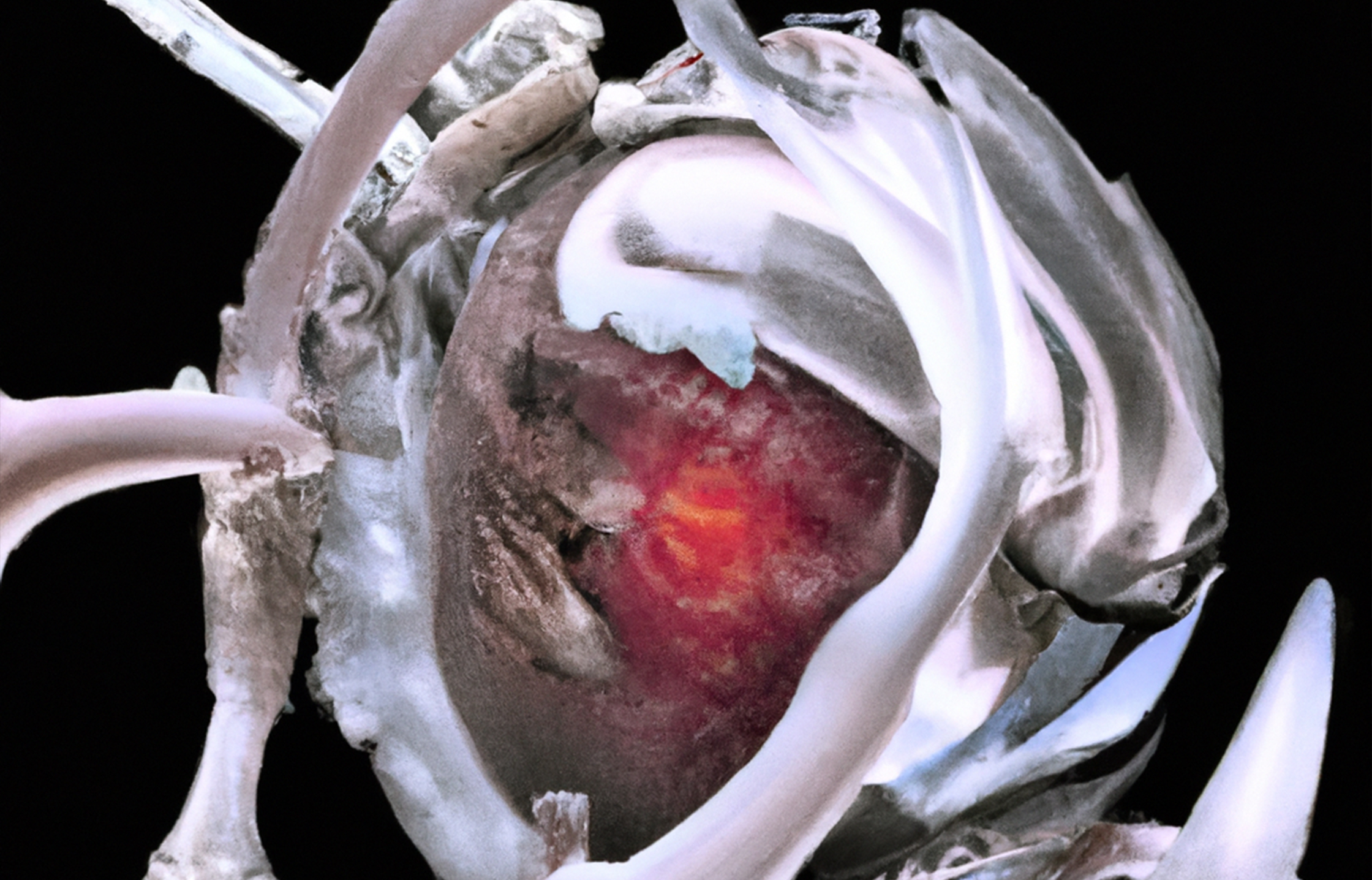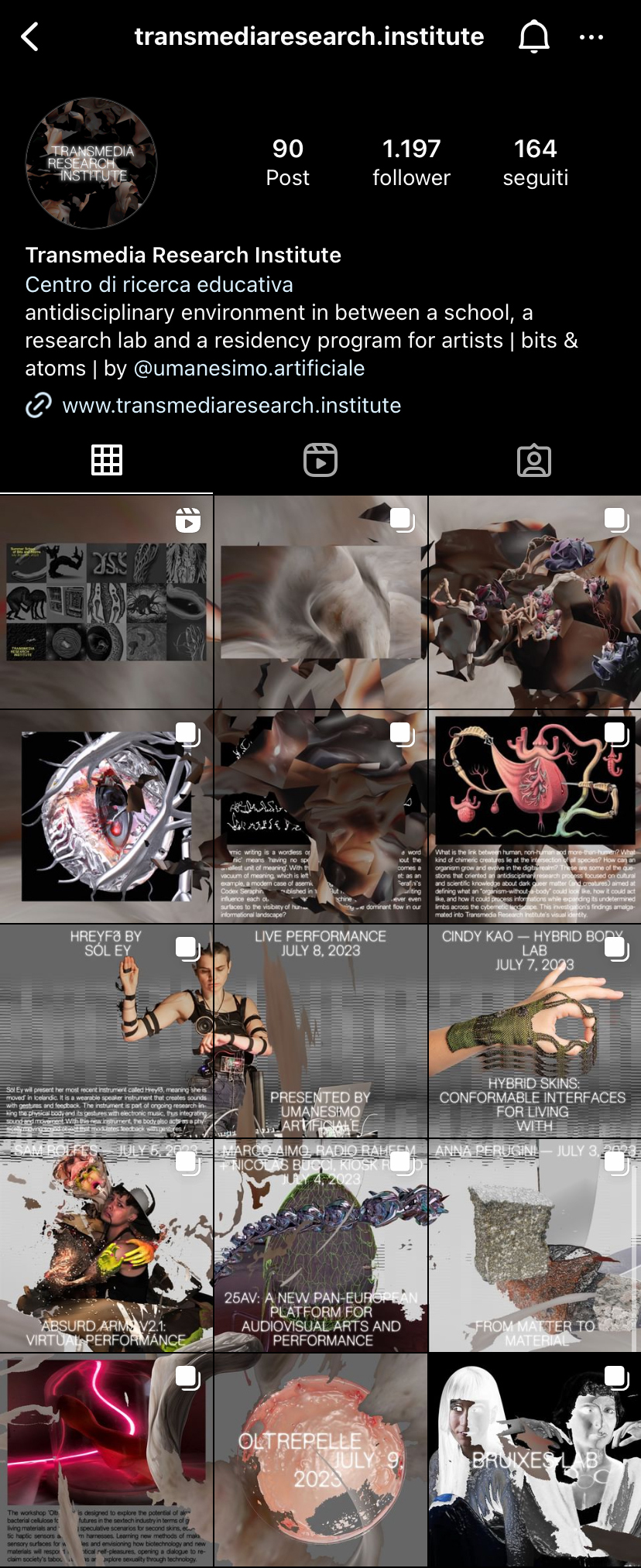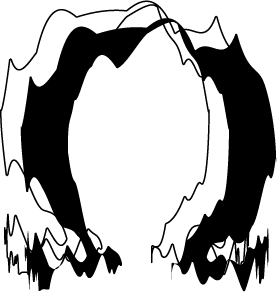o—s—c*

Fig. #01. Landscape I — view of the organism’s insides before its digestion of contents, 2023.
What is the link between human, non-human and more-than-human?
What kind of chimeric creatures lie at the intersection of all species?
How can an organism grow and evolve in the digital realm? These
are some of the questions that oriented an antidisciplinary research
process focused on cultural and scientific knowledge about dark
queer matter and creatures, aimed at defining what an “organism-without-a-body” (Organismus—Sine–Corpore) could look like, how it could act like, and how it could
process informations while expanding its undetermined limbs across
the cybernetic landscape. This investigation’s findings amalgamated
into Transmedia Research Institute’s visual identity.
Among the main references that catalyzed such an unusual concept – such as Giger’s hybrid systems
and Cronenberg’s mutant bodies – the most relevant has been Carpenter’s “Thing”: an alien creature
that replicates human data and infiltrates across their spaces and communities in order to replace them
and steal their parasitic role. The thing has, in fact, no proper shape by itself but rather lives on feeding
upon other creatures.


Following the same path, the “organism” had to live and evolve by inhabiting
multiple virtual landscapes and constantly eating and digesting new contents. It had to replicate data,
bits, pixels, skins, sounds, interactions, textures, technologies, frameworks and lymphs.
The organism replicates human tissues, displaying them as textures upon its
rendered limbs. Its form is unstable, growing and changing as it keeps absorbing and
digesting bits of data. Its body is chimeric and embraces queer transmateriality and
transmediality. As Karen Barad wonders: “Can we (re)generate what was missing in
fleshiness but materially present in virtuality? Can we (re)generate what our bodies
sense but cannot yet touch? Can we trans/form, regenerate, dismember, and re-
member anew fleshly bodies in their materiality?” (from Transmaterialities, 2015).


Fig. #04-05. Visualization of the O—S—C taking shape, displaying the totality of its organs / Landscape II — alternative view of the organism’s insides before its digestion of contents, 2023.
Transmedia Research Institute’s website is a cyber-lymphatic system: a virtual framework in which the
institute-organism itself takes shape. By exploring its digital tissues, a brutalist brain in the form of a
console manifests across the interface and responds to the inputs provided by the visitor. This modality
of display works as a real-time dissection of the platform in which the digital entrails are left open as windows, and coding prompts run across them like blood pumping through the veins. The opening screen
on the website showcases the genesis of the organism, while as the navigation process gets to its core,
the platform reveals both its contents and its prompts.︎︎︎
On social platforms, instead, the O—S—C tries to project its physical shape by absorbing and digesting
images, videos, sounds, texts and other contents, and thus showing the product of the dialogic, “symbiotic” process between the AI’s and human’s choices.


Fig. #07. Display of Transmedia Research Institute’s website opening showcasing the visual genesis of the O—S—C, 2023. The images that appear on the screen are willingly selected by an Artificial Intelligence and change every time; the same AI also highlights details and data of interest on each image as the human user is scrolling.
